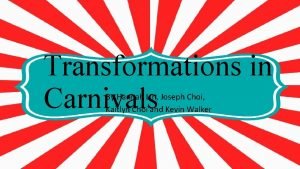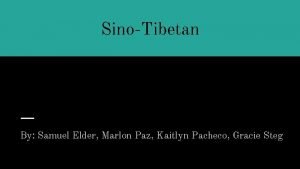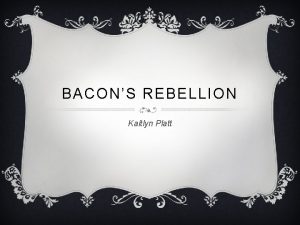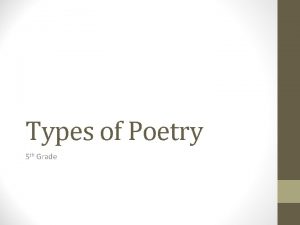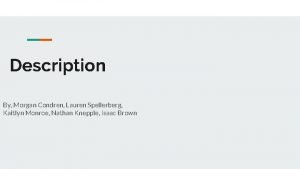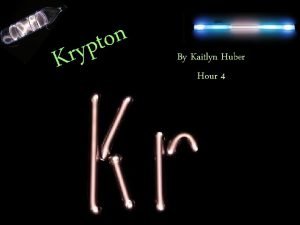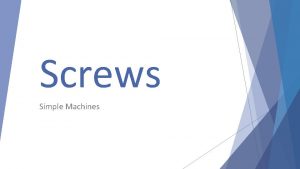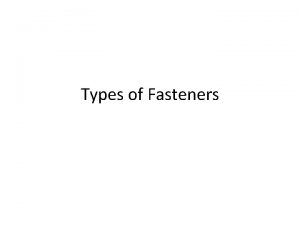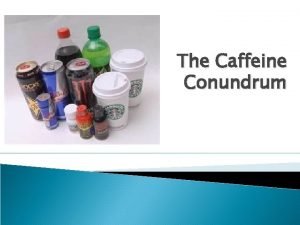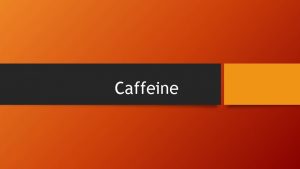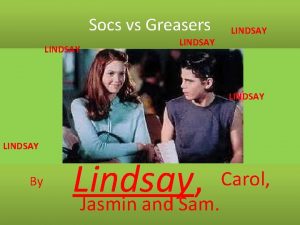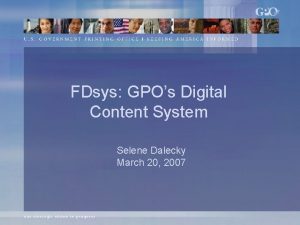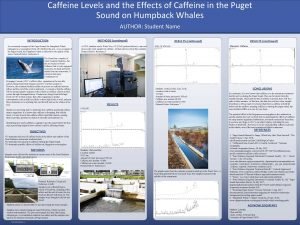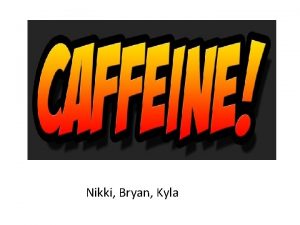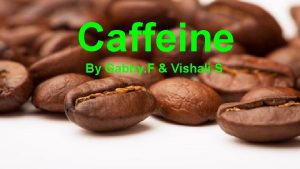Caffeine Chapter 12 Lindsay Screws Kaitlyn Dalecky Caffeine










- Slides: 10

Caffeine Chapter 12 Lindsay Screws & Kaitlyn Dalecky

Caffeine • Usually consumed for its stimulant effects – (mice/rats ) low doses stimulant effects; high doses reversed, reduced activity – (humans) low doses stimulating and fatigue-reducing effects; high doses feelings of tension/anxiety • Principal physcoactive ingredient in coffee – Coffea arabica • Most widely used drug worldwide – 80 -90% adults – Average = 200 -400 mg/day

Typical Caffeine Content of Common Food Items and Drugs Brewed coffee Decaffeinated coffee Tea Regular/diet colas Milk/sweet chocolate Excedrin No Doz 74 -83 mg/5 oz. cup 2 -3 mg/5 oz. cup 24 -30 mg/5 oz. cup 26 -58 mg/12 oz. serving 6 -20 mg/oz. 64. 8 mg/tablet 100 mg/tablet

Caffeine: Pharmacology • Theophylline • Normally consumed p. o. (drank) – Completely absorbed from the GI tract = 30 -60 min • Absorption begins in stomach but takes place mainly w/in the small intestine • Half-life = varies from person to person – Average = about 4 hours • Converted to metabolites by the liver – 95% eliminated through urine, 2 -5% through feces, the rest through other bodily fluids (saliva) – 1 -2% excreted unchanged

Theophylline • Very similar actions of caffeine • Three effects: bronchodilation, heart and CNS stimulation • Antiasthmatic treatment – Devoted to synthesizing safer asthma medicine • Sleep apnea • Can be taken p. o. or rectal and injectable form

Tolerance, Dependence, and Withdrawal • High caffeine consumption tolerance to cardiovascular and respiratory effects, decreased noticeable effects • Low caffeine consumption little tolerance, more noticeable effects

Withdrawal Symptoms • Symptoms can occur in individuals who consume as little as 100 mg/day – symptoms = headache, lethargy or fatigue – Means dependency • Lasts for a few days, then dissipate – Begins at 18 th hr of abstinence • Positive correlation between strength of dependency and severity of withdrawal symptoms

Side Effects • Little evidence to link w/ serious disease • Possibly raises cholesterol levels & BP • Directly related to fibrocystic breast disease – Can go away w/ the absence of usage • Heartburn • Interaction with alcohol – Just as drunk, but more aroused • Not recommended for pregnant women, light sleepers, very young/old, and cardiac patients

Mechanisms of Action • • Does not directly influence catecholamine systems Blocks GABAA –R, stimulates Ca 2+ w/in cells high/toxic doses Blocks A 1 and A 2 A –R (adenosine) low doses Adenosine = part of ATP (energy) – In brain, also acts as a NT – One explanation why first cup of coffee in the morning wakes some people up; refreshes a worker after post-lunch drowsiness; keeps a non-tolerant individual up at night if consumes late-night coffee

Caffeine Abuse • Caffeinism – Restlessness, nervousness, insomnia, physiological disturbances (tachycardia) • Difficult to distinguish from anxiety disorder – Individuals may experience strong withdrawal symptoms and cravings if attempt to stop usage • Has characteristics of an abused substance but usually not compulsive and doesn’t affect daily function – RFT of caffeine not due to drug=induced euphoria like those of other abused drugs
